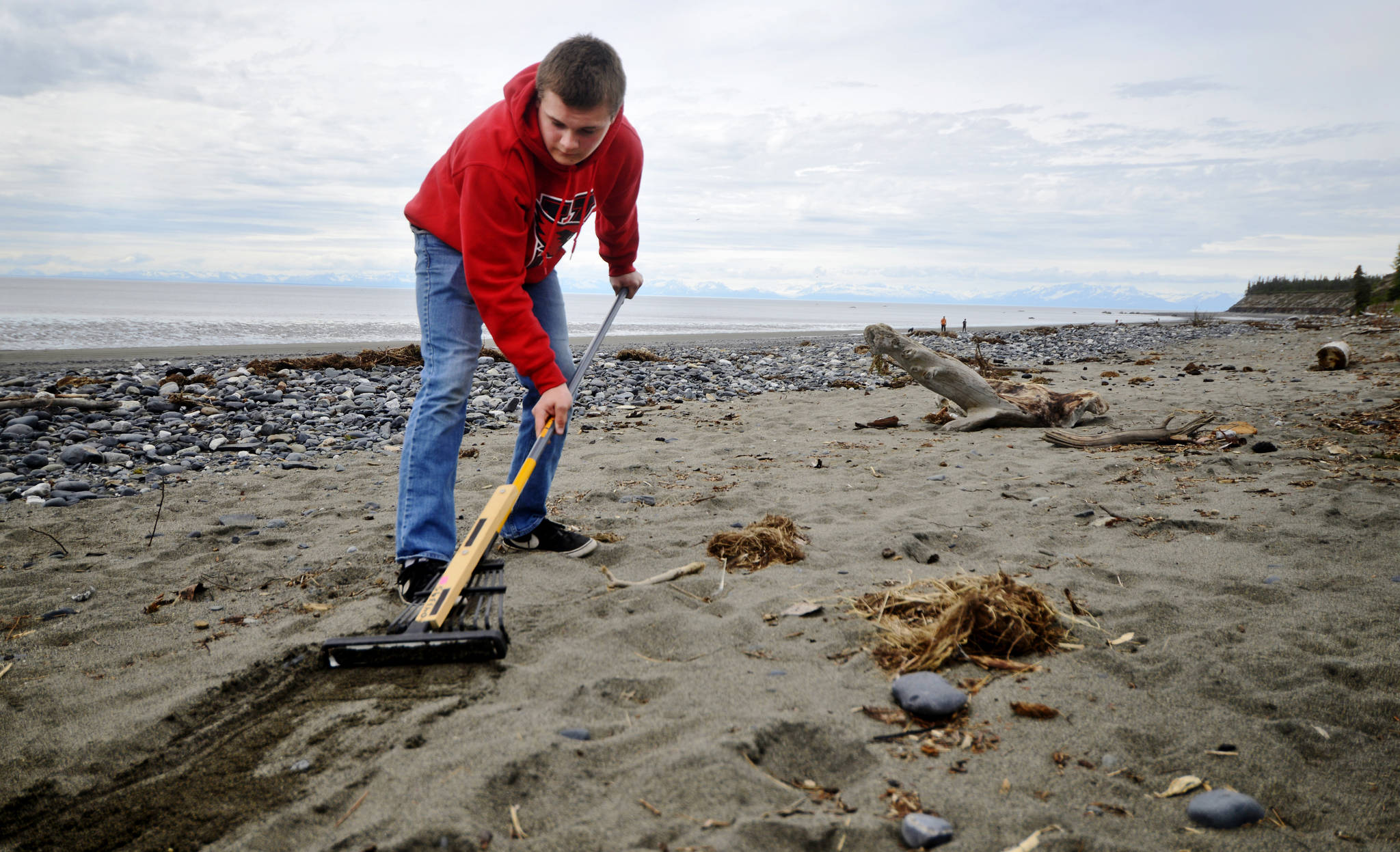Dipnetters, children, and anyone walking barefoot on Kenai beaches this summer may be less likely to step on a nail, screw, wire, lost tent stake or metal scrap thanks to an idea from a Kenai Central High School student picked up by the Kenai Parks and Recreation Department: attaching a magnet to the end of a beach rake.
Riley Graves — who will be a sophomore this year at Kenai Central — won sixth place in this April’s Caring for the Kenai, an annual competition for student conservation projects. Graves designed a beach rake with a magnet attached behind the tines for picking up metal objects stirred loose from the sand.
The possibility of beach visitors being injured by buried metal has been an increasing concern for Kenai’s city government. The beaches on the north and south sides of the Kenai River’s mouth are popular recreation areas year round, drawing thousands of people for three weeks each July when the personal-use dipnet fishery is open. In October 2017 the city council created a ban, which will go into effect July 1, against pallet fires on the beach that can leave behind nails and screws. Such smaller debris often escapes the tractor rakes that Kenai Parks and Recreation workers use to sweep fish waste and large pieces of trash from the sand.
“A couple years ago my family was metal-detecting, and we found about 27 tent stakes in 30 minutes to an hour,” Graves said. “The city had already come and swept, and it kind of made me mad because they didn’t collect the stuff that could harm us. You don’t want to go walking around and stepping on something and now you’ve got to get a tetanus shot.”
Graves remembered that incident when his science teacher assigned the class to enter projects in the Caring for the Kenai competition, leading to his prototype rake with a wooden attachment to drag a magnet behind it.
“I thought of just a magnet at first, but I thought if you put a rake in front it would disturb the sand and draw things out of the depths a bit easier,” Graves said.
After the competition, Graves took his prototype to the Kenai City Council’s May 16 meeting, where he demonstrated in the council chamber by pulling nails from a box of sand. As a result, one of the tractors plowing the beaches during this summer’s dipnet fishery — from July 10 to 31 — will have magnets mounted behind the rake to pick up metal objects.
“It’s pretty much following Riley’s (Caring for the Kenai) project suggestion,” said Kenai City Manager Paul Ostrander. “The city of Kenai is really excited that one of our local students put together a great project and is following through on it as well. That’s the kind of collaboration we’d love to have between our local students and the city.”
Bringing the idea to reality requires purchasing and shipping two hanging magnets for the city tractors and sliding sleeves to release debris, costing a total of $2,632. These will be funded with a $500 City of Kenai mini-grant and a new $2,000 Project Development Grant, sponsored by ENSTAR, which Caring for the Kenai began offering this year to contestants seeking to implement their ideas, said Caring for the Kenai Outreach Director Katie Quinn. Though the magnets are already purchased and will be used in this summer’s dipnet fishery, Quinn said the grants will reimburse Kenai’s expenses if the council votes to accept them at a future meeting.
“We really won’t know how effective this is until we try it,” Ostrander said. “And we also won’t know the extent of the amount of metal that’s on the beach until we utilize this as well. So this is very much a pilot project. We’re really excited to see how this works.”
Reach Ben Boettger at bboettger@peninsulaclarion.com.
